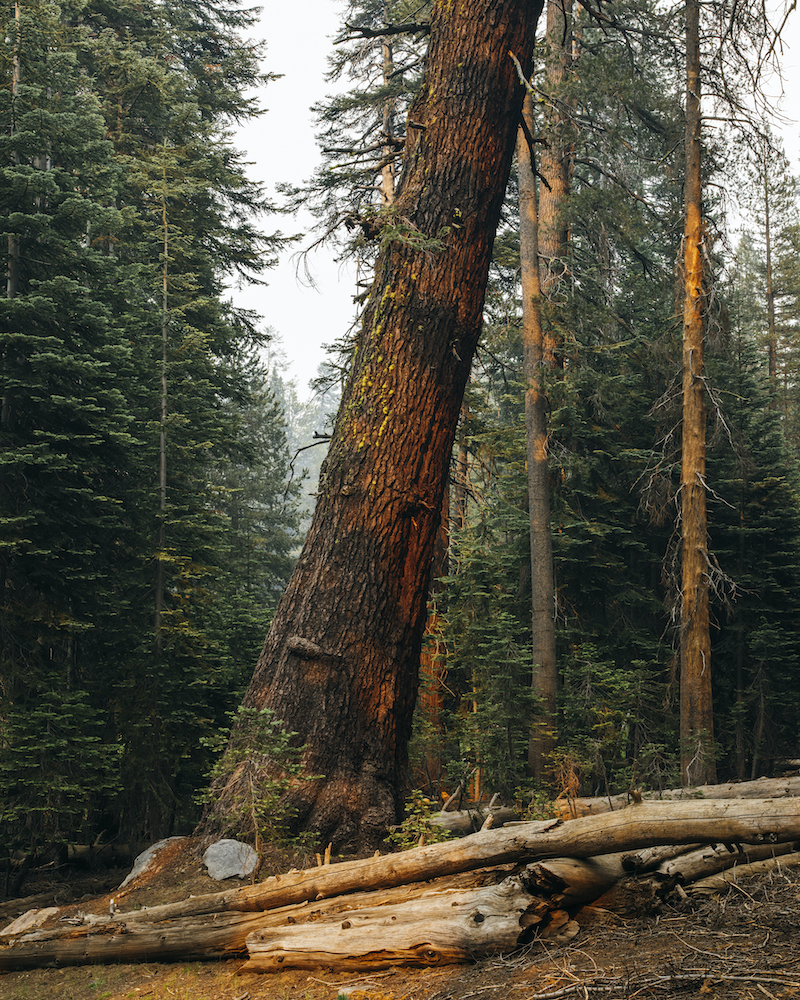In January 2024, American Forests announced that the National Champion Tree Program will be moving to a new home in the School of Natural Resources at the University of Tennessee Institute of Agriculture (UTIA).
1. Consider nominating your tree to your state program first!
Throughout the year, American Forests works closely with all state-level Champion Tree Programs to ensure that the largest trees in your state are recognized on our National Register. Consider nominating your tree to your state program first!
2. Determine if your tree is an eligible species
Starting December 1, 2021 American Forests has updated eligibility criteria for specimens recognized by the National Register of Champion Trees.
Specimens nominated to American Forests’ National Register of Champion Trees are recognized at the species rank. The register does not recognize specimens at the subspecies, variety, cultivar or hybrid rank.
Tree species that are recognized by the registry are native to the land within the political boundaries of the United States, or they are exotic introduced tree species that have become naturalized within those boundaries.
Except for those on American Forests’ “Eligible Urban Community Tree Species List,” the registry does not recognize exotic introduced tree species, or specimens outside of the species rank.
Native tree species and naturalized tree species within the political boundaries of the U.S. Territories are not currently recognized by the registry.
With more than 60,000 tree species globally and thousands of tree species introduced to the United States, limitations to the geographic regions, taxonomic ranks, and species that the registry recognizes are strictly due to staff capacity constraints and are not an indication of bias against geographic regions, taxonomic identifications, or species origins.
The creation of our list of eligible tree species has been informed by numerous online and text resources. View our list of references here.
See American Forests’ definitions for the terms that we use here.
3. Determine if your tree has a fighting change: Measure it!
Measure your tree and compare it to the current National Champion for your tree’s species. (View the current National Register of Champion Trees.) Does your tree have close to or more total points than the current National Champion Tree?
Use American Forests’ “Measuring Guidelines Handbook” to ensure that you are measuring your tree the right way
American Forests calculates National Champion Trees using the following formula:
x = Tree Trunk Circumference (Inches)
y = Tree Height (Feet)
z = Tree’s Average Crown Spread (Feet)
x + y + (z/4) = Total Points
4. Take photographs of your tree
Six photographs of your tree are required for your nomination to be considered fully eligible. Starting November 1, 2021 new nominations that do not have the following six photographs will not be crowned a National Champion Tree. Please take the following photographs to the best of your ability.
5. Nominate your tree using our online nomination form
After you have determined that your tree is an eligible species, you have measured it, and taken 6 photographs of it, you can nominate your tree. Nominations are currently closed.
6. What’s next? State coordinator verification
After you have submitted a nomination form and photographs of your tree, your nomination will not be considered fully eligible until the tree’s health, species identification, and measurements have been verified by an expert. The National Register of Champion Trees works with state-level Champion Tree Programs and volunteers from the National Cadre of Tree Measuring Experts to confirm these aspects of each nomination to ensure the validity of nominations and the credibility of the National Register.

Photo Credit: Brian Kelley
Snag rule
Trees that are standing dead are ineligible for the National Register of Champion Trees.
Misidentified trees
If a tree is found to have been misidentified and the tree is an ineligible species to the National Register of Champion Trees, the nomination will be considered disqualified.
If a tree is found to have been misidentified and the tree is an eligible species to the National Register, the nomination is still considered eligible.
If a Champion Tree is found to have been misidentified, but is still an eligible species it will remain a Champion if it is the largest tree nominated to the National Register of its correct species.
Growth habit
There are a number of species that are eligible for the National Register of Champion Trees that are documented to grow in the form of either a shrub or a tree. Nominations must be for species that are growing in the form of a tree. Species growing in shrub form are not eligible for the National Register of Champion Trees.
See American Forests’ definitions for the terms that we use here.
Champions and co-champions
Trees are crowned Champions if they are the largest tree of their species nominated to the National Register of Champion Trees.
Trees are also crowned Co-Champions:
- If the largest trees of a species are under 100 total points, trees will be crowned Co-Champion Trees if they are within 3 total points of each other.
- If the largest trees of a species are over 100 points, they will be Co-Champions Trees if the differential between them is no more than 3% of the larger tree’s total points.
10-Year rule
Trees that were nominated and trees that were crowned National Champions on American Forests’ National Register of Champion Trees must be re-verified by State Coordinators that they are still living every 10 years. In addition, new tree measurements and photographs of the tree must be submitted. Failure to re-verify trees and submit new measurements and photographs will render a tree ineligible for Champion consideration and/or will result in the dethroning of a current National Champion.
For example: Champions last measured in 2009 will be dethroned if they are not re-verified before the release of the 2019 National Register.

